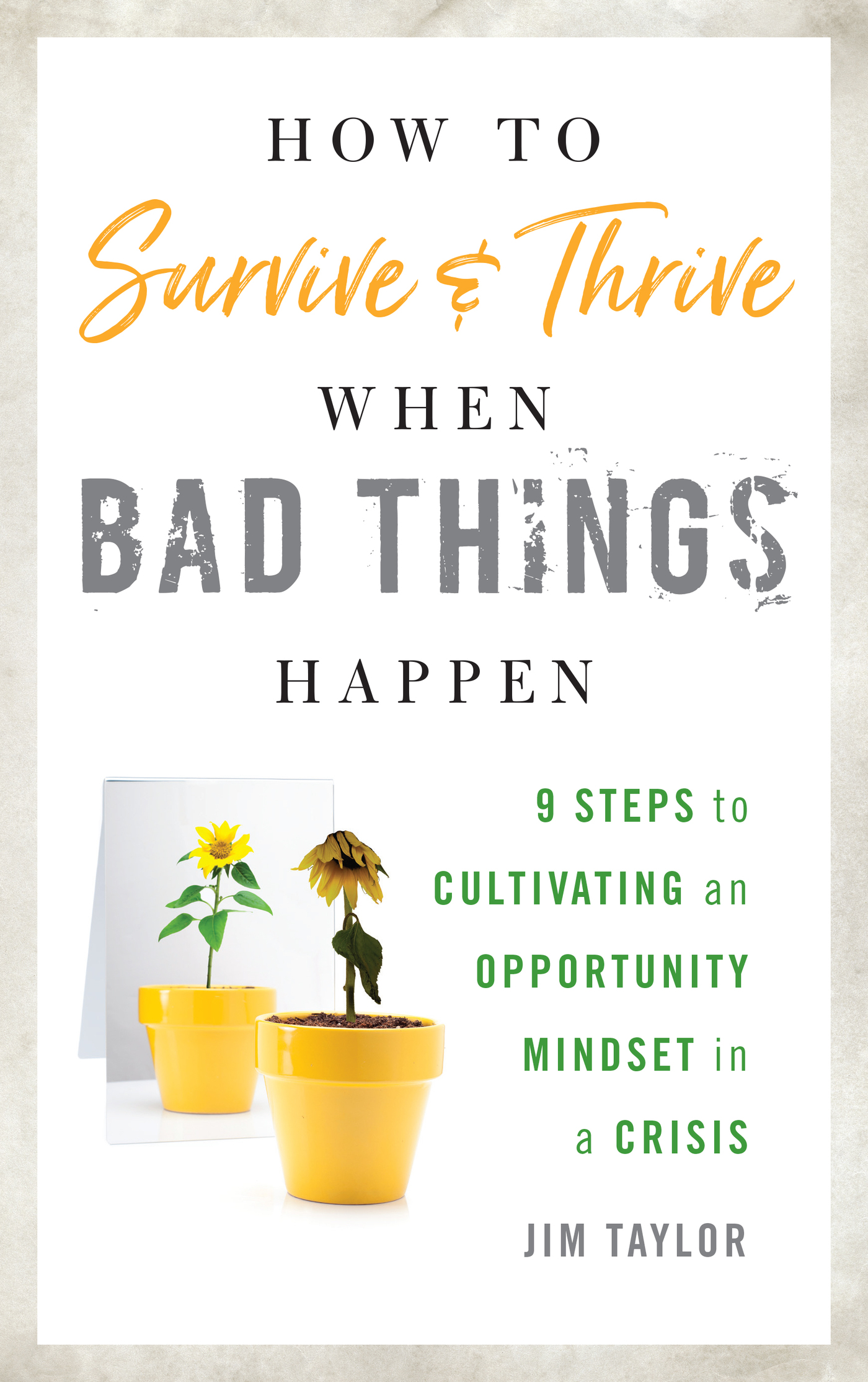How to Survive and Thrive
When Bad Things Happen
How to Survive and Thrive
When Bad Things Happen
9 Steps to Cultivating an
Opportunity Mindset in a Crisis
Jim Taylor
ROWMAN & LITTLEFIELD
Lanham Boulder New York London
Published by Rowman & Littlefield
An imprint of The Rowman & Littlefield Publishing Group, Inc.
4501 Forbes Boulevard, Suite 200, Lanham, Maryland 20706
www.rowman.com
6 Tinworth Street, London SE11 5AL
Copyright 2019 by Jim Taylor
All rights reserved. No part of this book may be reproduced in any form or by any electronic or mechanical means, including information storage and retrieval systems, without written permission from the publisher, except by a reviewer who may quote passages in a review.
British Library Cataloguing in Publication Information Available
Library of Congress Cataloging-in-Publication Data
Name: Taylor, Jim, 1958, author.
Title: How to survive and thrive when bad things happen : 9 steps to cultivating an opportunity mindset in a crisis / Jim Taylor.
Description: Lanham : Rowman & Littlefield, [2019] | Includes bibliographical references and index.
Identifiers: LCCN 2018049540 (print) | LCCN 2018051495 (ebook) | ISBN 9781538108567 (electronic) | ISBN 9781538108550 (cloth : alk. paper)
Subjects: LCSH: Adjustment (Psychology) | CrisesPsychological aspects. | Crisis managementPsychological aspects.
Classification: LCC BF335 (ebook) | LCC BF335 .T39 2019 (print) | DDC 155.2/4dc23
LC record available at https://lccn.loc.gov/2018049540
 TM The paper used in this publication meets the minimum requirements of American National Standard for Information Sciences Permanence of Paper for Printed Library Materials, ANSI/NISO Z39.48-1992.
TM The paper used in this publication meets the minimum requirements of American National Standard for Information Sciences Permanence of Paper for Printed Library Materials, ANSI/NISO Z39.48-1992.
Printed in the United States of America
Acknowledgments
I want to express my appreciation for my nine chapter assistants who generously gave their time, energy, and good cheer in support of the preparation of How to Survive and Thrive: Marina Salman; Samantha Sanderson Brown, PhD; Dylan Christian; Toby Larson; Nina Rois-Doria, PhD; Michael Clark; Hope Williams; Michael Walker; and Ashley Fryer. Thank you all for your unbounded generosity of spirit.
I would like to give special recognition to Samantha Sanderson Brown. Samantha started out as a chapter assistant (as noted above), but thanks to her remarkable editing contributions to her assigned chapter, I asked her to be my manuscript editor (a first for me). Her ability to see the forest from the trees and her keen knowledge of structure, flow, and grammar has taken How to Survive and Thrive to a new level of clarity. Even with seventeen authored books to my credit, I am now a better writer thanks to you, Samantha.
I also want to thank everyone at Rowman & Littlefield for their confidence in my ability to contribute to the marketplace of ideas. How to Survive and Thrive is my third book with R&L and my first self-help book. I look forward to more collaborations with you in the future.
Finally, I want to express my deepest gratitude to my wife, Sarah, and my daughters, Catie and Gracie. Their unwavering support throughout my career as a consultant, speaker, and author has made it a journey full of meaning, fulfillment, and joy. I love you all madly!
Introduction
Between stimulus and response there is a space. In that space is our power to choose our response. In our response lies our growth and our freedom.Victor Frankl, noted psychiatrist
In his 1933 inaugural speech, President Franklin Delano Roosevelt addressed the nation as it was being consumed by what came to be known as the Great Depression. One of his most memorable statements from that now-famous speech is The only thing we have to fear is fear itself. FDR wanted to instill a sense of confidence, calm, and hope into citizens who were truly terrified of what had happened and what lay ahead for the US economy. What you may not know, however, is the full context of that declaration: So, first of all, let me assert my firm belief that the only thing we have to fear is fear itselfnameless, unreasoning, unjustified terror which paralyzes needed efforts to convert retreat into advance.
FDR was certainly right about that crisis. He realized that economic conditions and how we respond to them are powerfully influenced by the psychology of the times. FDR also knew that the panicked mentality overtaking our country would prevent it from taking the actions it needed to recover quickly.
The Great Recession
The economic crisis of the late 2000s was dubbed the Great Recession. Much as the Great Depression was influenced by the psychology of its time, the more recent crisis was affected by an unrealistically optimistic psychologywhat the former Federal Reserve chairman Alan Greenspan referred to as irrational exuberanceand quickly descended into what might be called irrational despair. Once again, a mentality of fear took hold of our country and the world. That ineffective mentality made it even more difficult to weather the economic storm at every level of our financial system, from the global financial markets and national economies to industries and companies to individual investors and workers. Consumers began saving instead of spending, investors put their money in safe places, companies cut costs, banks started hoarding cash, and countries imposed austerity on their citizens.
So, yes, negative mentality played a big role in the emergence and long-term impact of the Great Depression and the Great Recession. At the same time, contrary to what FDR said, many of the crises we experience, whether global, societal, organizational, or individual, are justifiably frightening. The Great Depression and Great Recession were exacerbated by psychology, but they were grounded in economics and finance. To a large extent, we were at the mercy of uncontrolled market forces, both small and large. Some of the forces were close to usfor example, easy credit, reckless consumerism, and the housing bubble. Other forces rose from the financial miasmasuch as subprime and predatory lending, the creation of risky investment products, and overleveraged financial institutions. Still other forces imposed themselves from the halls of government in the form of economic policysuch as deregulation, the bailout of banks that were deemed too big to fail, and changes in monetary policy.
What we know now is that in reaction to the lit tinderbox of global finance, a pessimistic mentality fanned the flames and spread like wildfire across our country and around the world. We witnessed a mass exodus from the stock market, investors withdrawing money reflexively, knee-jerk reactions from politicians, rioting in the streets, and hasty and poorly thought-out solutions by governmental policy makers. As the crisis played out, we saw progress in response to the crisis in fits and starts, often driven by political ideology rather than sound economic theory and evidence, as our country and the world struggled to move beyond its visceral reactions to a calmer and more deliberate answer. Yet almost a decade after its supposed conclusion, the aftereffects of the Great Recession are still present, with individuals, companies, industries, and nations continuing to struggle between the calm voice of reason and the shrill voice of fear, frustration, and anger.
Both the Great Depression and the Great Recession offer us powerful lessons about the right and wrong ways to respond to the crises we inevitably experience in our livesas individuals, communities, nations, and the world. Its easy to get so absorbed in the powerful and visceral reactions we feel when faced with a crisis that we underestimate or completely miss the valuable lessons we can learn about how to deal with crises of all sorts. More importantly, we have the power to regain control of our own psychology when a crisis strikes. We can allow this unproductive mentality to overwhelm us. Or we can embrace a positive, composed, and constructive psychology to both help us when a crisis arises and also better prepare us for future crises.
Next page
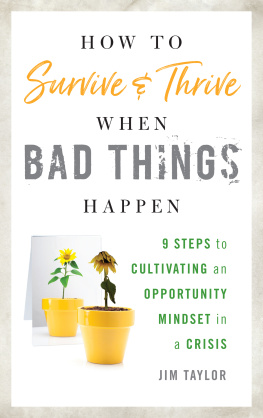




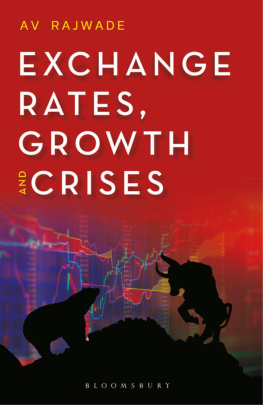

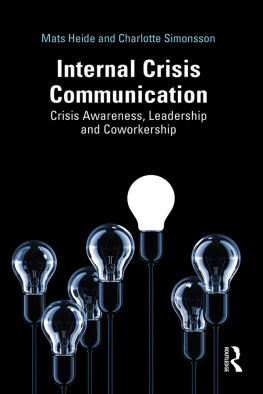



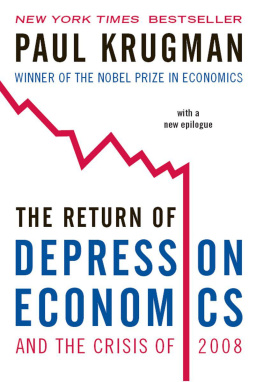
 TM The paper used in this publication meets the minimum requirements of American National Standard for Information Sciences Permanence of Paper for Printed Library Materials, ANSI/NISO Z39.48-1992.
TM The paper used in this publication meets the minimum requirements of American National Standard for Information Sciences Permanence of Paper for Printed Library Materials, ANSI/NISO Z39.48-1992.